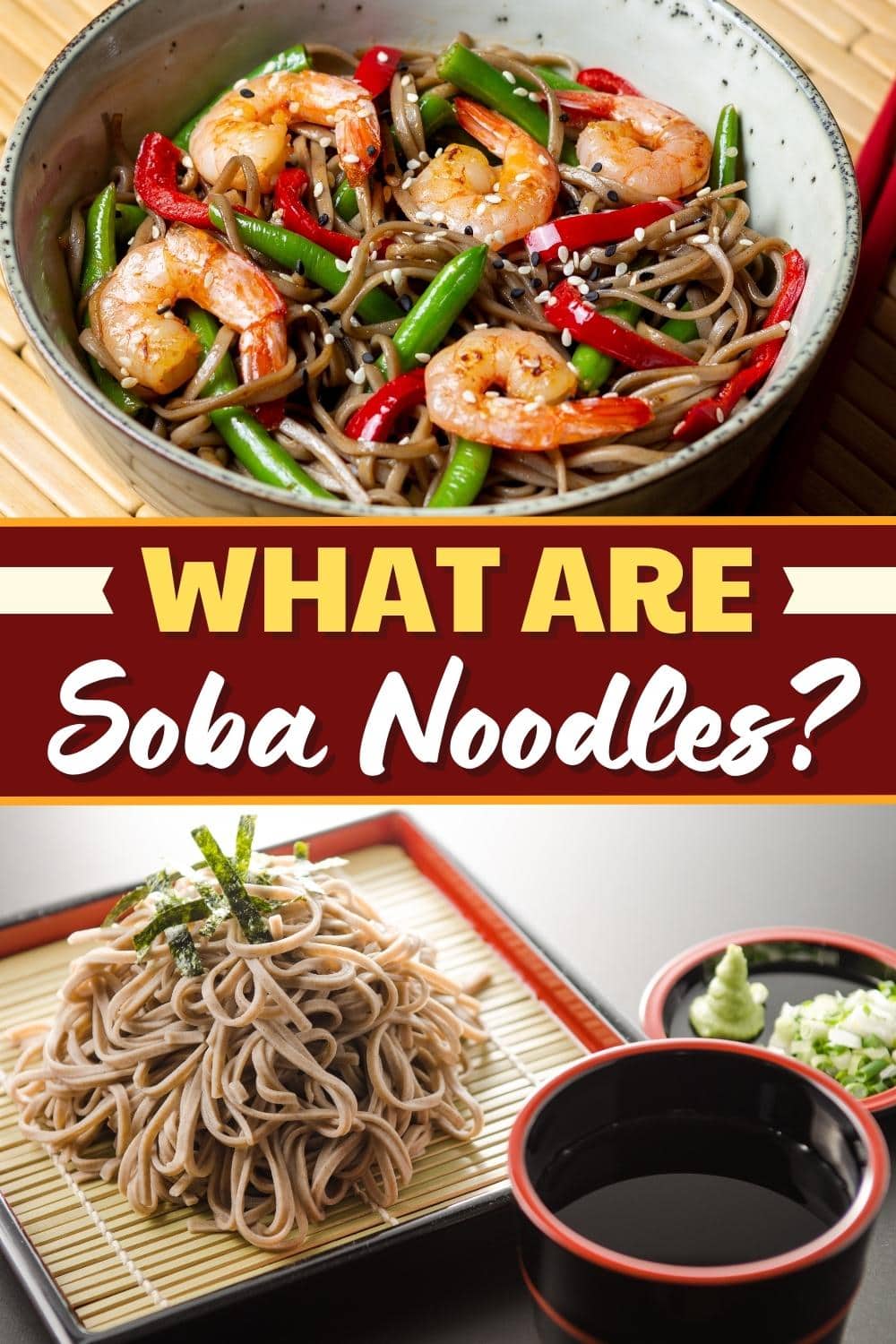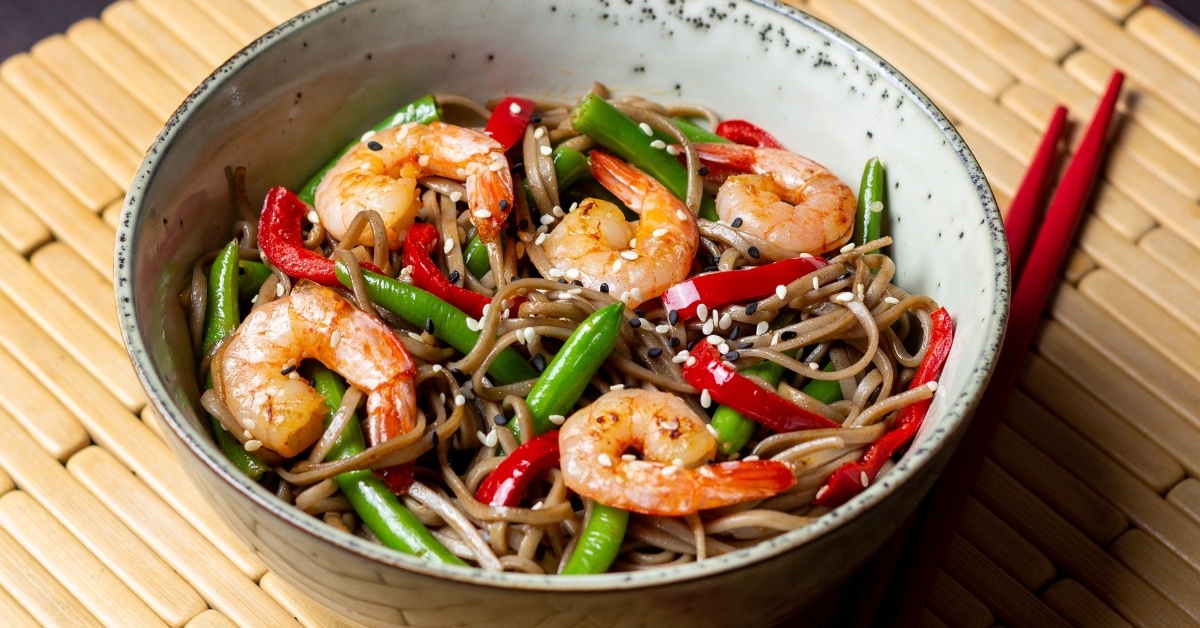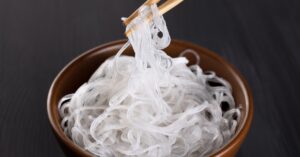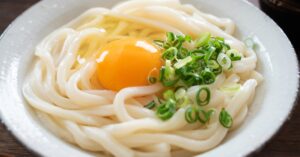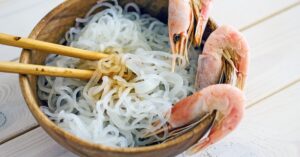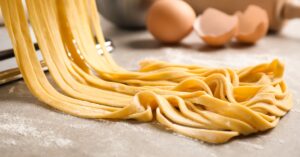Soba noodles are thin Japanese noodles made from buckwheat flour or a combination of buckwheat and wheat flour.
They have a slightly nutty flavor and a smooth texture, and they’re a staple in Japanese cuisine.
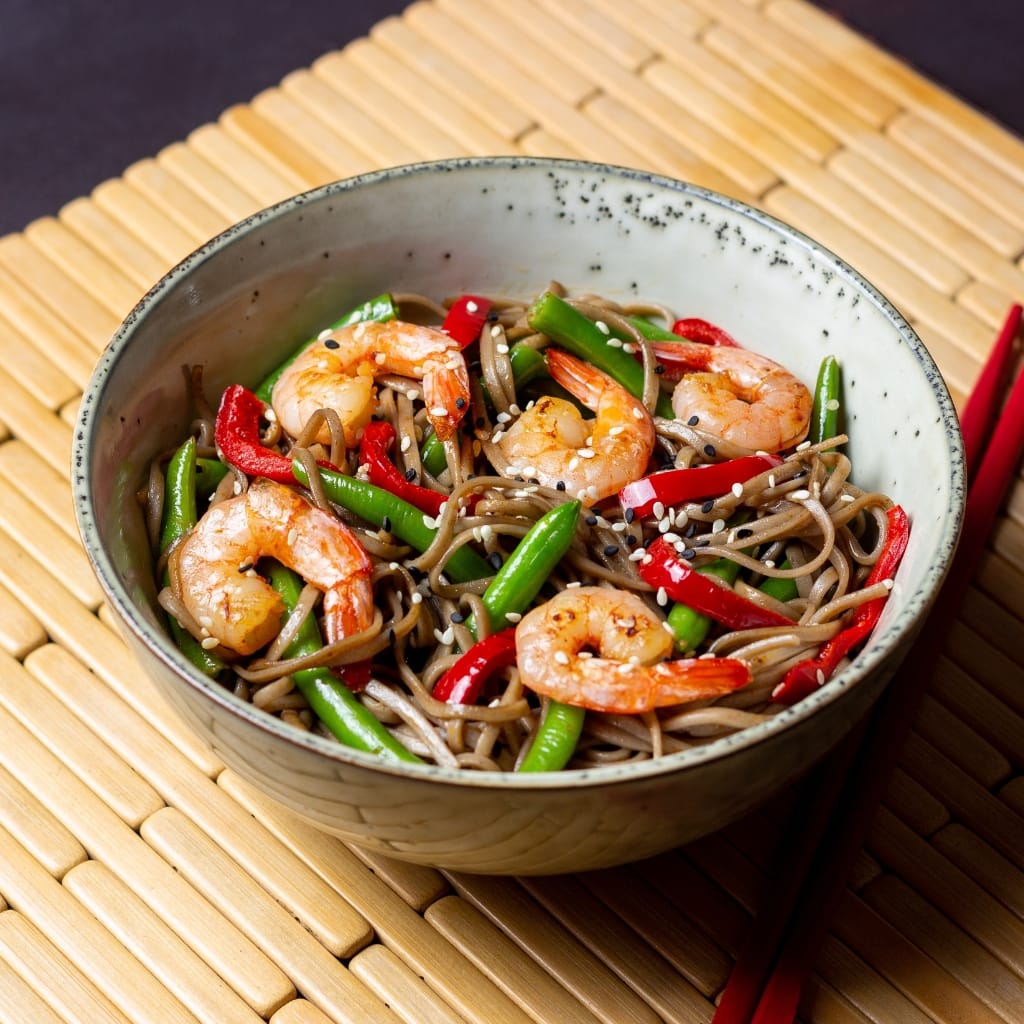
They deliver rich, nutty flavors to any dish, whether cold or hot. Toss them in a soup, add them to a salad, or deep fry them! The meaty texture and exquisite flavors make them the star of any hot or cold meal.
So, give ramen noodles the night off. Let’s take a look at what are soba noodles, and how to use them!
What are Soba Noodles?
Soba noodles have high levels of buckwheat flour with just a hint of wheat flour.
They earn their darker coloring thanks to the high-protein buckwheat flour. Buckwheat also lends a nutty and slightly sweet flavor.
And soba noodles aren’t your average light and carefree noodle. With a dense and super chewy consistency, they’re a great candidate for a full meal.
In Japan, these noodles are year-round residents. They’re a great addition to cold dishes and make an excellent soup.
Plus, their amazingly nutty flavors add a lot of natural seasoning to simple recipes. And the best part? They’re very nutritious and healthy. A serving of soba noodles has higher levels of protein and fiber than your typical noodle.
Soba noodle dishes are more filling and hearty than dishes made from other types of noodles. They’re also kinder to your waistline.
The next time you want to whip up Japanese food at home, try soba noodles!

How Are Soba Noodles Made?
Traditionally, Japanese soba noodles use 100 percent buckwheat, which makes them gluten-free. However, commercial soba isn’t gluten-free. Many brands of soba use a high percentage of buckwheat flour but also incorporate wheat flour.
You can also add other tasty additions right into the soba dough. Extra flavorful ingredients include wild yam flour, seaweed, or matcha.
Once the dough comes together, it’s rolled flat in cut into long strips, just like spaghetti. You can serve them immediately after cut or leave them to dry for a future recipe.
Making homemade soba noodles at home is a fine-tuned skill. Achieving that perfect consistency and flavor takes time. Soba noodle artisans spend years perfecting their soba technique!
But don’t worry, you don’t have to quit your job to become a soba artisan. You can pick up a package at your local grocery store!
How Soba Is Traditionally Served
In Japan, soba noodles are a good-luck food served on New Year’s Eve. And after New Year’s Eve, they show up in hot and cold dishes year-round.
Here are a few authentic Japanese recipes that celebrate the humble soba noodle.
Zaru soba. Cold noodle salad, aka zaru soba, is a dish of cold noodles with a tasty dipping sauce. It’s traditionally served in a woven basket with a side of mentsuyu for dipping.
Kake soba. Kake soba is also called bukkake-soba and often appears as a hot soup on New Year’s Eve. It pairs hearty soba noodles in rich dashi stock with plenty of fresh toppings.
Soba chips. Soba noodles also make an amazingly nutty snack! Frying and serving them with a tasty dip (like wasabi aioli) puts potato chips to shame.
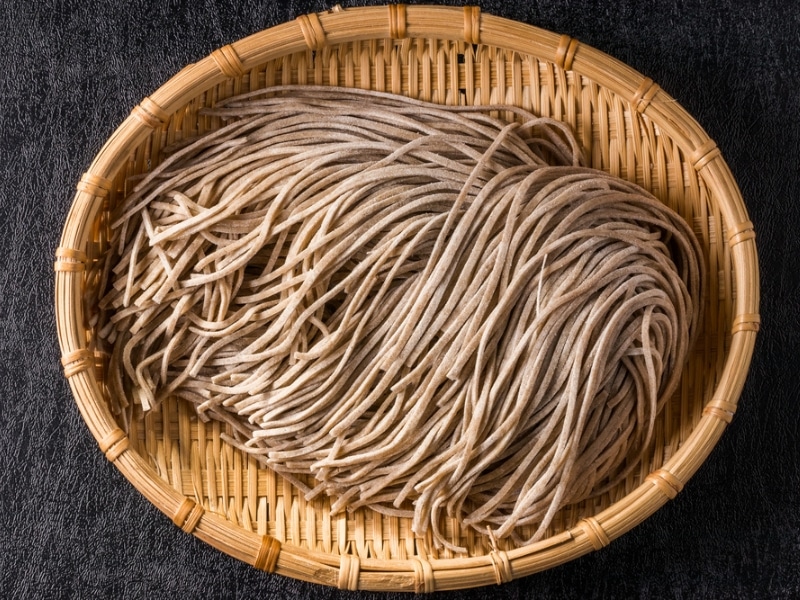
What Do Soba Noodles Taste Like?
Japanese soba noodles have the same shape as Italian spaghetti, but the similarities end there.
They have an ultra-chew bite and a complex flavor. The distinctive chewy texture is one of its defining characteristics. While other noodles are light and delicate, soba has a fantastic chew and meaty texture.
The buckwheat flour makes them far more than just a vehicle for dips and sauces. It imparts a unique and robust flavor like toasted sesame seeds or whole grains.
With nutty flavors and a great bite, they’re excellent in salads, soups, or fried into delicious snacks.
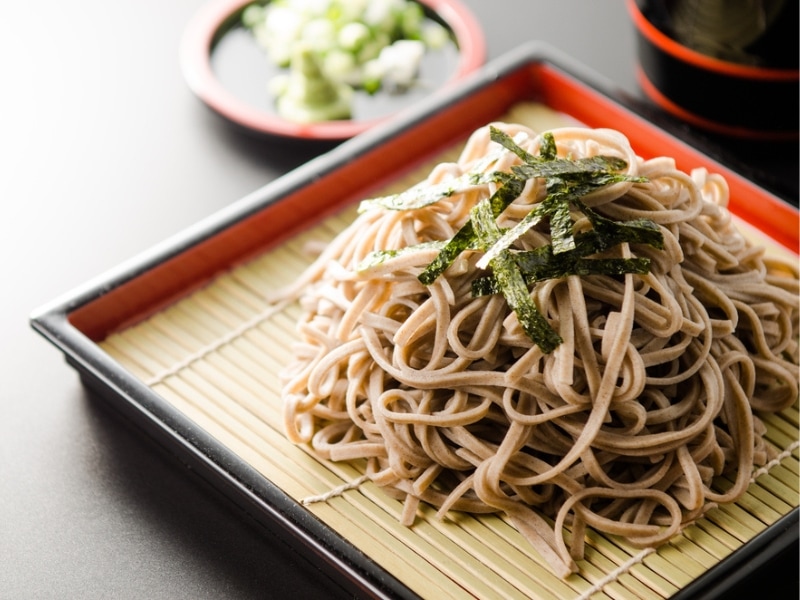
How to Cook Soba Noodles
There are two ways to enjoy soba noodles: hot or cold. And both methods are incredibly easy.
Simply boil soba noodles in hot water until tender for cold dishes. Then, immediately transfer them to an ice bath so they don’t continue cooking. You can place cold soba noodles in a dish, top them with garnishes, and serve them with tasty dipping sauces. They’re also an excellent flavor addition to summer salads.
For hot soups, soba noodles are just as easy. Boil your soba noodles in an umami-rich dashi broth, where they will soak up all those delicious flavors.
Soba noodles aren’t exactly delicate and have a wide variety of tasty (and easy) dishes.
Where to Buy Soba Noodles
The good news is that the popularity of soba noodles has spread worldwide. They’re available at most supermarkets with an international aisle.
Look for soba noodles in the Asian food aisle, next to ramen and udon noodles. My favorite brand of soba is Sukina. You can find them online if you can’t track them down at the store.
Only one or two brands of soba noodles will be available when shopping at your local grocery store.
For more options (and flavors), try your local Asian market. They’ll likely have more options for soba noodles and more flavors.
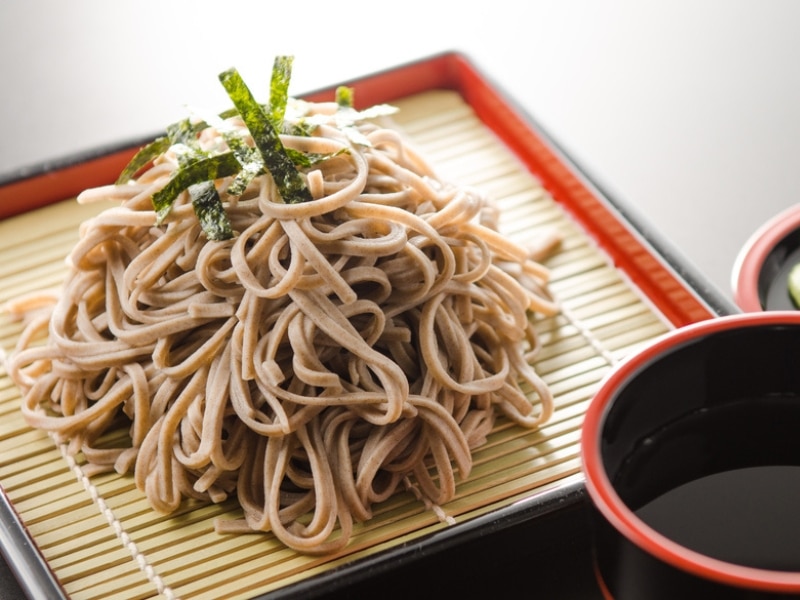
How to Store
Soba noodles will stay fresh in your pantry for up to one year, provided you store them correctly.
Most brands of soba noodles package them in plastic bags that don’t seal very well. To ensure your noodles stay fresh, transfer them to an air-tight container (or a freezer bag) to protect them from the air. If stored in an air-tight container, you can keep dried soba noodles in your pantry.
Dried soba noodles, like any noodle, can go bad. If you notice discoloration or an odd odor, it’s best to toss them.
Fresh soba noodles have a much shorter lifespan. Always store fresh soba noodles in the refrigerator, and use them within three days.
However, it’s unlikely that these noodles will stick around long enough to go bad!
